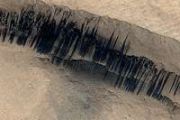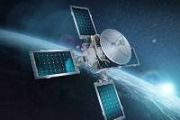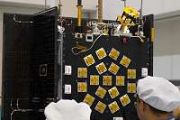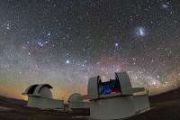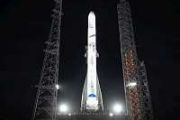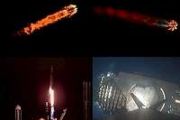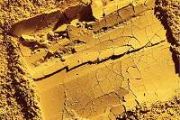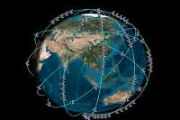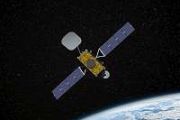
Copernical Team
CSA awards $72M contract to Spire Global Canada for WildFireSat Mission
 Spire Global Canada, has secured a Can$72 million contract, including harmonized sales tax, from the Government of Canada. The company will design and develop a satellite constellation dedicated to monitoring active wildfires across Canada from space as part of the country's WildFireSat mission. Spire will collaborate with OroraTech, a leader in space-based thermal intelligence, to develop the p
Spire Global Canada, has secured a Can$72 million contract, including harmonized sales tax, from the Government of Canada. The company will design and develop a satellite constellation dedicated to monitoring active wildfires across Canada from space as part of the country's WildFireSat mission. Spire will collaborate with OroraTech, a leader in space-based thermal intelligence, to develop the p Physicists measure a key aspect of superconductivity in "magic-angle" graphene
 Superconducting materials are similar to the carpool lane in a congested interstate. Like commuters who ride together, electrons that pair up can bypass the regular traffic, moving through the material with zero friction.
But just as with carpools, how easily electron pairs can flow depends on a number of conditions, including the density of pairs that are moving through the material. This
Superconducting materials are similar to the carpool lane in a congested interstate. Like commuters who ride together, electrons that pair up can bypass the regular traffic, moving through the material with zero friction.
But just as with carpools, how easily electron pairs can flow depends on a number of conditions, including the density of pairs that are moving through the material. This SFL Missions Inc. Secures CSA Contract for HAWC Satellite Concept Study
 SFL Missions Inc. has been selected by the Canadian Space Agency (CSA) to conduct a conceptual design study for the High-Altitude Aerosols, Water Vapour, and Clouds (HAWC) satellite mission. This initiative represents Canada's contribution to NASA's Atmosphere Observing System (AOS), which is scheduled for launch in 2031.
"The HAWC mission will collect atmospheric data that will support ex
SFL Missions Inc. has been selected by the Canadian Space Agency (CSA) to conduct a conceptual design study for the High-Altitude Aerosols, Water Vapour, and Clouds (HAWC) satellite mission. This initiative represents Canada's contribution to NASA's Atmosphere Observing System (AOS), which is scheduled for launch in 2031.
"The HAWC mission will collect atmospheric data that will support ex Webb unveils evolving dust system and energetic jets
 This latest NASA/ESA/CSA James Webb Space Telescope Picture of the Month showcases HH 30 with extraordinary clarity. Set within the dark cloud LDN 1551 in the Taurus Molecular Cloud, this edge-on protoplanetary disc features both jets and a disc wind, emphasizing the turbulent environment in which stars and planets form.
Herbig-Haro objects, like HH 30, appear as luminous markers in star-f
This latest NASA/ESA/CSA James Webb Space Telescope Picture of the Month showcases HH 30 with extraordinary clarity. Set within the dark cloud LDN 1551 in the Taurus Molecular Cloud, this edge-on protoplanetary disc features both jets and a disc wind, emphasizing the turbulent environment in which stars and planets form.
Herbig-Haro objects, like HH 30, appear as luminous markers in star-f A lab with a view
 Image:
A lab with a view
Image:
A lab with a view Spinning Neutron Star Generates Immense Magnetic Fields
 An international team of scientists has successfully modeled the formation and evolution of some of the most powerful magnetic fields in the Universe. Led by researchers from Newcastle University, the University of Leeds, and institutions in France, the study was recently published in Nature Astronomy.
The findings reveal that the Tayler-Spruit dynamo, activated by fallback material from s
An international team of scientists has successfully modeled the formation and evolution of some of the most powerful magnetic fields in the Universe. Led by researchers from Newcastle University, the University of Leeds, and institutions in France, the study was recently published in Nature Astronomy.
The findings reveal that the Tayler-Spruit dynamo, activated by fallback material from s Sliding into novel materials: A new frontier in material science
 Can copper be turned into gold? While ancient alchemists pursued this elusive goal, modern science knows such a transformation requires nuclear reactions. However, some materials, like graphite and diamond, share the same atomic composition-pure carbon-yet differ vastly due to atomic arrangement. While converting graphite into diamond demands extreme heat and pressure, a more practical material
Can copper be turned into gold? While ancient alchemists pursued this elusive goal, modern science knows such a transformation requires nuclear reactions. However, some materials, like graphite and diamond, share the same atomic composition-pure carbon-yet differ vastly due to atomic arrangement. While converting graphite into diamond demands extreme heat and pressure, a more practical material Galileo ground stations undergo systemwide migration
 In a significant technological milestone, ESA has commenced the large-scale migration of Galileo's Control Centres, a complex endeavor that engaged over 200 experts from ESA, industry partners, and the EU Agency for the Space Programme (EUSPA). This marks the start of a comprehensive modernization effort aimed at upgrading Galileo's Ground Segment, a globally dispersed network of operational sit
In a significant technological milestone, ESA has commenced the large-scale migration of Galileo's Control Centres, a complex endeavor that engaged over 200 experts from ESA, industry partners, and the EU Agency for the Space Programme (EUSPA). This marks the start of a comprehensive modernization effort aimed at upgrading Galileo's Ground Segment, a globally dispersed network of operational sit Dust Uncovers Magnetic Fields in Young Star Systems
 For the first time, astronomers have successfully detected and analyzed the magnetic field surrounding a young star in a region where planetary formation is believed to be underway. By using dust as a tracer, researchers have mapped out the three-dimensional structure of the magnetic field, shedding new light on the processes that shape planetary systems.
Planets emerge within swirling clo
For the first time, astronomers have successfully detected and analyzed the magnetic field surrounding a young star in a region where planetary formation is believed to be underway. By using dust as a tracer, researchers have mapped out the three-dimensional structure of the magnetic field, shedding new light on the processes that shape planetary systems.
Planets emerge within swirling clo Wobbling Stars Lead to Discovery of Hidden Celestial Bodies in Gaia Data
 Researchers using data from the European Space Agency's Gaia mission have identified an enormous exoplanet and a brown dwarf, marking a first in planetary discovery via Gaia's ability to detect stellar wobbles caused by gravitational interactions. These objects, found orbiting low-mass stars, present an unusual scenario that challenges established theories of planetary formation.
A new stu
Researchers using data from the European Space Agency's Gaia mission have identified an enormous exoplanet and a brown dwarf, marking a first in planetary discovery via Gaia's ability to detect stellar wobbles caused by gravitational interactions. These objects, found orbiting low-mass stars, present an unusual scenario that challenges established theories of planetary formation.
A new stu 










